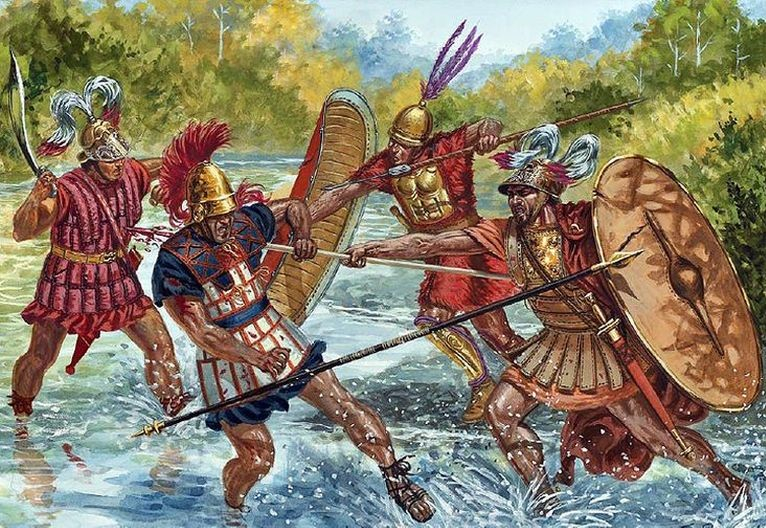Roman army developed from a short term levy system to a professional army
The early Roman army consisted of the armies of the early Roman Republic and the early Roman Kingdom. From 500 BC to 300 BCE, the Early Roman army was based on an annual levy. During this time, it has been argued that the army used Etruscan or Greek organizational and technological models at this time when fighting mostly consisted of small-scale raids for loot.
At the beginning of each campaigning season, when war was proclaimed, adult male citizens were required to pay a levy, which served as the foundation for the early Roman army. There were no professional or permanent forces. The usual levy during the Regal Era (until around 500 BC) was roughly 9,000 men, made up of 2,400 light-armed infantry (Rorarii, afterward termed Velites), 600 light cavalry, and 6,000 fully armed infantry (possibly Greek-style hoplites) (Equites Celeres). The standard levy retained the same size when the monarchs were replaced by two dually chosen praetores in around 500 BC, but it was now evenly divided between the Praetors, who each commanded one legion of 4,500 men.
The Romans continued to use the levy system throughout the Mid-Republic Period (300 BC–88 BCE), but they also adopted the manipular structure for their legions beginning with the Velites, the Hastati, the Principes, and the Triarii. In contrast to the maximum 6-year tenure of conscripts, a rising proportion of recruits during the Late Republic Period (88 to 30 BCE) joined up as volunteers for 16-year periods. The short-term levy system was completely replaced in Imperial Rome (30 BCE - 284 CE) by a standing professional army made up primarily of volunteers who served conventional 20-year terms in addition to five years as reservists. However, many remained on active duty for up to 30 to 40 years.
The Late Roman military era spans from (284–476 AD). The Ancient Roman Army resumed regular yearly conscription of citizens during this era, which was culminated by the reforms of the emperor Diocletian (reigned 284–305 AD), while also accepting a sizable number of non-citizen barbarian volunteers. However, troops did not rejoin the Republic's temporary levies. Citizens and non-citizens now serve in the same units, replacing the previous split organization of auxiliary and legions. Cohorts or even smaller groups were formed from the former legions. At the same time, a sizeable component of the army's effectiveness was deployed as comitatus presentable, forces that accompanied the emperors, throughout the interior of the empire.











